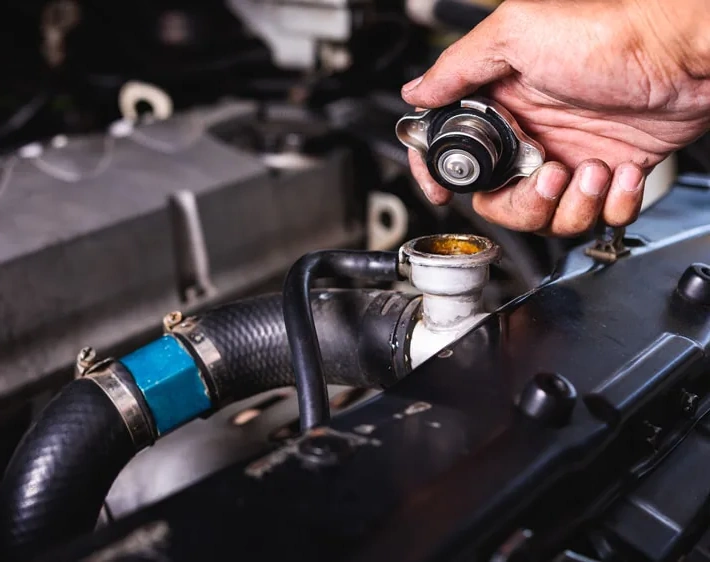How to Bypass a Coolant Temperature Sensor?
How to Bypass a Coolant Temperature Sensor?
A coolant temperature sensor is essential to your car’s engine cooling system. It helps to regulate the flow of coolant to the engine and prevents the engine from overheating. If your coolant temperature sensor is not working correctly, it can cause your car to overheat and lead to engine damage.
This post may teach you how to get around a coolant temperature sensor. We will also provide tips on turning off the coolant temperature sensor and answer frequently asked questions about this topic.
What is a coolant temperature sensor, and how does it work?

A coolant temperature sensor is a small device used to measure the temperature of the engine coolant. The sensor is usually on the engine block, near the thermostat housing. The sensor is connected to the engine computer, which uses the information from the sensor to regulate the engine cooling system.
The work of the coolant temperature sensor is to provide accurate information about the temperature of the engine coolant to the computer. The computer uses this information to have control over the operation of the engine cooling system. The computer will activate the radiator fan and open the valves to allow more coolant to flow if the coolant temperature rises too high. Conversely, the computer will close the radiator valves and turn off the fan if the coolant temperature gets too cold.
The Types of Coolant Temperature Sensors:
There are two main types of coolant temperature sensors: linear and digital. Linear sensors measure changes in resistance as they heat up or cool down. As such, they can only provide a relative temperature change measurement. Digital sensors, however, use a built-in thermocouple to provide absolute temperature measurement.
Can a temperature sensor be bypassed?
Yes, bypassing a coolant temperature sensor is possible, but we don’t recommend bypassing your coolant temperature sensor. If you bypass the sensor, the engine will not be able to accurately monitor the temperature of the coolant, which can lead to engine damage.
In addition, bypassing the sensor will prevent the engine from adjusting the fuel/air ratio in response to the coolant temperature, reducing fuel efficiency. The nature of the coolant can lead to engine damage.
Bypassing the sensor might also reduce fuel efficiency because the engine won’t be able to modify the fuel/air ratio based on the coolant temperature.
The symptoms of a faulty coolant temperature sensor
If your vehicle has a faulty coolant temperature sensor, you may notice one or more of these symptoms:
- The engine overheats quickly..
- The engine’s Coolant Temperature Warning Light comes on..
- The engine runs too cold..
- Poor fuel economy..
- Rough idle.
Where is the Coolant Temperature Sensor located?
The Coolant Temperature Sensor is near the thermostat housing. It is a two-wire sensor that screws into the engine block.
The engine control unit uses the sensor signal to adjust the fuel mixture and ignition timing. The engine will run too lavishly or leanly if the sensor isn’t operating correctly.
If the engine runs too rich, it will consume too much fuel and produce too much pollution. The engine might overheat if it runs too lean, resulting in inadequate power.
What happens if a coolant temperature sensor is bad?
If your coolant temperature sensor is not good, it can cause a few different issues with your car. The first and most obvious symptom will likely be an overheating engine.
If the sensor is not sending the correct information to the computer, it may think the engine is colder than it is. This can cause the computer to run the engine more decadent than usual, leading to increased fuel consumption and emissions.
Additionally, if the sensor is not working correctly, it can also cause the check engine light to come on.
Another potential issue that can occur if your coolant temperature sensor is terrible is stalling. If the sensor is not sending the correct information to the computer, it may think that the engine is hotter than it is. This can cause the computer to lean out the fuel mixture, which can eventually lead to stalling.
Lastly, a faulty coolant temperature sensor can also cause poor performance in your car overall. If the computer isn’t getting accurate information about how hot or cold the engine is running, it can’t adjust appropriately to things like ignition timing and fuel delivery. Your car’s power and efficiency may suffer as a result.
How to Bypass a Coolant Temperature Sensor?
Method One: Use a Resistor
A coolant temperature sensor can be bypassed using a resistor. This will fool the engine into thinking that the coolant is always at its ideal temperature, preventing it from going into safe mode.
To do this, you’ll need to find a resistor with the same resistance as the sensor. You can then connect the resistor in place of the sensor.
Use heat-resistant wire, as the engine bay can get very hot. Also, be careful not to damage other wires or components while working.
Method Two: Use a Cut Wire
If you’re comfortable working with wires, you can bypass the coolant temperature sensor by cutting the wire that goes to it.
First, locate the wire leading to the sensor. It will likely be color-coded, so it’s easy to identify. Once you’ve found it, cut it and strip away any insulation around the end of the wire.
Next, connect each end of the wire to a jumper wire. This will complete the circuit and bypass the sensor entirely.
As with method one, be careful not to damage any other wires or components while working on this project.
Method Three: Use a Jumper Wire
You’ll need a little screwdriver and a jumper wire to finish this procedure. Begin by unscrewing the small screw that is holding the wire in place. Pull the wire out of the connection slowly after removing the screw. Take your jumper wire and insert it into the connector. Make sure that the end of the wire touches the metal prongs. Screw the small screw back to hold the jumper wire in place.
How to turn off the Coolant Temperature Sensor?
You can turn off the coolant temperature sensor by disconnecting the negative battery cable. This will disable the engine cooling system.
The sensor is on the radiator and attached to the engine block. It is important to note that this should only be done as a last resort, as it can cause engine damage.
To disconnect the negative battery cable safely, you will need a pair of pliers and a socket wrench set.
1) Locate the negative battery terminal and loosen the bolt with your socket wrench set.
2) Use your pliers to remove the cable from the terminal.
3) Place the cable away from the battery so it cannot come into contact with metal surfaces.
4) To ensure that the coolant temperature sensor has been turned off, start your automobile and let it run for a while.








